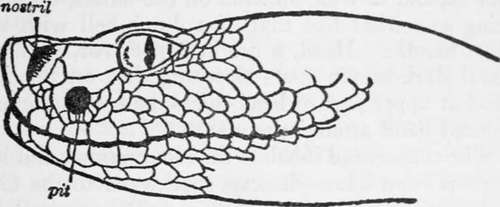How To Treat A Snake Bite
Description
This section is from the book "Camping And Woodcraft", by Horace Kephart. Also available from Amazon: Camping and Woodcraft.
How To Treat A Snake Bite
The only dangerous snakes in the United States are the rattlesnake, the copperhead, and the cottonmouth moccasin. The small coral snake (harlequin, bead snake) of the Gulf states, and the Sonoran coral snake of New Mexico and Arizona, are somewhat venomous, but their bite is not fatal to a healthy adult. The Gila monster of the Southwest is a dangerous lizard—the only one that is venomous—but can scarcely be provoked to bite.
All other snakes and lizards of our country and Canada are harmless—their bite is no more to be feared than that of a mouse. The notion that the bite of our so-called "puff-adder," "spreading adder," "blowing viper," must be dangerous, because the snake puffs up its neck and hisses like a goose, or that the common watersnake is a moccasin and consequently venomous, is all moonshine, like the story of the hoop-snake and the snake with a poisonous sting in its tail.
However, that other notion that a rattlesnake's bite is not a serious matter is moonshine, too. Men who know nothing about other rattlers than the little prairie rattlesnake are not competent to express an opinion on the subject.
A bite from any venomous snake is dangerous, in proportion to the size of the snake, and to the amount of venom that enters the circulation. A bite that does not pierce an important blood vessel is seldom fatal, even if no treatment is given, unless the snake be quite large.
The rattlesnake, copperhead, and cottonmouth are easily distinguished from all other snakes, as all three of them bear a peculiar mark, or rather a pair of marks, that no other animal possesses. The mark is the pit, which is a deep cavity on each side of the face between the nostril and the eye, sinking into the upper jawbone. Its position is shown in the accompanying cut (Fig. 192). All of them have an upright elliptical, instead of round, pupil in the eye.

Fig. 192. Head of rattlesnake (after Stejneger).
All venomous snakes have fangs, and no harmless ones have them. The fangs are in the upper jaw only. In the coral snakes they are permanently erect, but in the other venomous snakes here named they lie flat against the roof of the mouth, when not in use, pointing backward, and are erected by the reptile in striking. They are long, slender, sharply pointed, perforated like a hypodermic needle, and connected by a duct with the venom glands which lie behind the eyes. Auxiliary fangs lie in a sac underneath the regular fang on each side, and, in case the latter is broken off or extracted, a new fang will be ready for business within a few days.
Here are a few characteristics of the pit vipers, as our three deadly snakes collectively are called:
Continue to:
- prev: Ptomaine Poisoning
- Table of Contents
- next: 1. Copperhead (Also Called Deaf Adder, Upland Moccasin, Pilot Snake, Chunk Head)
